This is the English version of Floris Juynboll’s introduction to his Lotte Lehmann Discography which he prepared for the biography written by Alan Jefferson.
Lotte Lehmann had the kind of soprano voice that made her predestined for the performance of Lieder. Although her earlier recordings show that she could command a D flat above top C (for example, the acoustic Odeon version of ‘Butterfly’s Entrance’), her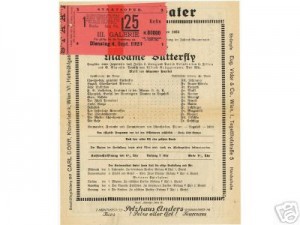 voice had the mellow quality of a mezzo-soprano, the type of voice for which Schubert, Schumann, Brahms and Wolf had composed most of the standard Lieder repertoire. The advantage of this particular voice over the true, high soprano, is that the singer can often more easily color the tone in order to express the subtle nuances of a song text. She made her first recordings for Pathé in 1914 just after she had been engaged by the Vienna Court Opera; from 1916 to 1921 she recorded for Polydor, then from 1924 onwards for Odeon in Berlin. The opera sets, Der Rosenkavalier and Die Walküre, both recorded in Vienna, followed in 1933 and 1935 for Electrola (German HMV), though Act 1 of the Walküre actually first appeared in Germany on the German Columbia label. From 1935 onwards she recorded only in the USA. Recordings are comparatively few after 1944 considering how well known she was, but this lack is made up for to some extent by a number of live concert recitals preserved on record, including an important Wolf recital, which she gave in New York in 1938.
voice had the mellow quality of a mezzo-soprano, the type of voice for which Schubert, Schumann, Brahms and Wolf had composed most of the standard Lieder repertoire. The advantage of this particular voice over the true, high soprano, is that the singer can often more easily color the tone in order to express the subtle nuances of a song text. She made her first recordings for Pathé in 1914 just after she had been engaged by the Vienna Court Opera; from 1916 to 1921 she recorded for Polydor, then from 1924 onwards for Odeon in Berlin. The opera sets, Der Rosenkavalier and Die Walküre, both recorded in Vienna, followed in 1933 and 1935 for Electrola (German HMV), though Act 1 of the Walküre actually first appeared in Germany on the German Columbia label. From 1935 onwards she recorded only in the USA. Recordings are comparatively few after 1944 considering how well known she was, but this lack is made up for to some extent by a number of live concert recitals preserved on record, including an important Wolf recital, which she gave in New York in 1938.
Her earliest records, made before 1927 by the acoustic horn method, contain many gems which she did not later re-record. If we listen carefully to the excellent transfers issued by Preiser in their Lebendige Vergangenheit series (‘Lotte Lehmann’, Vols. II, III, IV and V) we hear a young, warm, beautifully produced voice. However dated they may sound, these discs are technically good for the period and the late acoustics from Odeon come across very well. The accompanying orchestra can be heard in correct perspective and details such as the bells in the ‘Entrance of Butterfly’ scene and in ‘Der Erste, der Lieb’ mich gelehrt’ from Korngold’s opera, Die Tote Stadt are clearly audible. At the end of this last aria she sharpens a top C, a lapse in intonation seldom heard in her recordings. [Or, on careful listening, is it a technical recording or pressing problem? How else would the artist and company approve the release? The Marston recordings show it to be excellent.]
The introduction of electric recordings during 1925 and 1926 brought with it a vast improvement in sound quality and tonal definition. Columbia began to use the new process by the end of 1925 and Odeon followed, rather hesitantly at first, a year later. A week after Lotte’s last acoustic session, a recording of the Rosenlieder in August 1926, Odeon produced transfers from a series of recordings of the Concertgebouw Orchestra conducted by Willem Mengelberg made by Columbia, with whom they were affiliated. [Lehmann recorded the Rosenlieder with a microphone but was dissatisfied with the results and chose rather the acoustic.]
The improvement in tonal clarity is at once evident from the first electric recordings made by Lotte Lehmann in February 1927. Unfortunately, the Odeon company did not immediately use the new medium to the best advantage, nor did they seem to realize that electric recording would show up, all to audibly, any defects in the quality of orchestral accompaniments and inadequacies on the part of instrumentalists and conductors.
Odeon began electric recording by following the former acoustic practice of having singers and instrumentalists grouped closely around the microphone, and making the recordings in acoustically ‘dead’ studios. Horst Wahl, who was employed by Odeon during this period, relates how he used to visit the Musikerbörse in Berlin, a kind of exchange where musicians without engagements that day could be hired. If too many players had been hired, thus overcrowding the microphone, some were sent away and the reduced volume of sound available was amplified in order to suggest an ‘orchestra’ when only a small instrumental ensemble – sometimes only a trio – was actually playing.
The resultant sound-quality was far from as good as it should have been, and matters were not improved by Odeon’s current policy of having almost all singers accompanied by instrumentalists even when singing German Lieder. The practice of singing Lieder to orchestral accompaniment seems to have originated from the nineteenth century custom of having songs by Schubert and Schumann orchestrated by well-known composers for performance at symphony concerts. [Something that still occurs in the 21st century!] Schubert himself never made orchestrations of his songs as his entire output was intended for performance by a small circle of music-loving friends. Since there was a lack of published song accompaniments arranged for small instrumental groups, the Odeon company had to have them specially prepared, and the words Eigene Bearbeitung, which occur frequently in the recording books, meant that the orchestrations were the work of house conductors like Weissmann, Gurlitt, Römer and others, who were paid direct by Odeon for their services. Some Lieder recordings were accompanied by the piano, but the instruments in the Odeon studios seemed to have been in poor shape and, more often than not, sound badly out of tune. This is noticeable even with keyboard recordings by pianists such as Siegfried Gundeis and Cor de Groot.
Few arrangers seemed able to transcribe piano accompaniments without making some ‘improvements’, most of them in very questionable taste. Frieder Weissmann, for example, when orchestrating the songs of Schumann, not only rearranged the accompaniment and altered the composer’s harmonies now and then, but frequently added inner contrapuntal parts. Nor is the conducting beyond criticism. Lack of rehearsal may have been a contributory cause but bad intonation, faulty balance and poor ensemble, which occur too often on the recordings, and which the close microphone positioning exposes, display a quality of musicianship so poor as to be almost inexplicable, especially when it is remembered that these ad hoc instrumental ensembles often included members of the Berlin Philharmonic Orchestra.
Not until 1930 did matters improve, at the same time as the recordings themselves improved. But even in June 1930 Schumann’s ‘Ich grolle nicht’ suffers from orchestral maltreatment as well as excessive rubato. Not that the use of piano accompaniment guaranteed satisfactory results, as, for example, in the recording of Schubert’s ‘Erlkönig’. Lotte sings well in what must be the fastest version of this song on record. The famous octave triplets are absent most of the time, and the whole performance is one mad rush by pianist and singer to cram the song on to a ten-inch side. [Lehmann told me that these were elements beyond her control and used the word “dreadful” to describe the orchestrated accompaniments.]
Odeon’s predilection for ten-inch recordings gave rise to endless artistic problems, especially in the performance of Lieder. The playing time is simply too short in, for example, some of the songs in Schumann’s song cycle, Frauenliebe und –leben, especially at the rather dragging tempo adopted on the 1928 recording, where the preludes and postludes are either cut short or omitted altogether when the song is too long for the side. The recordings of Wagner’s Wesendonck-Lieder, otherwise beautifully sung, suffer in exactly the same way. When a song was too short other measures were taken in order to fill the side. In Schumann’s ‘An meinem Herze’ the accompaniment to the first verse is played as an instrumental prelude, contrary to the composer’s intentions, the tempo is slow and the closing ritardando is dragged out at length. Even so there is half a minute of empty grooves after the music stops.
In Schubert’s ‘Der Tod und das Mädchen’ the use of a string quartet instead of the piano, which could remind listeners of the well-known set of variations of the second movement of the composer’s own string quartet, might have been acceptable, but the intonation of the strings leaves much to be desired.
Richard Strauss’s ‘Cäcilie’, with its rapturous outbursts of melody, which she recorded in 1921, suits her well. ‘Morgen’, is a song of which she gave more intense performances in later years, though in one of these versions does she display the sense of wonder we hear with Elisabeth Schumann, or the delightful word painting of Dietrich Fischer-Dieskau or Elisabeth Schwarzkopf. This song figured prominently on the farewell programs of the latter singer, as it did with Lotte, and she made it her last encore at her very last public concert in California in 1951.
Most of the acoustic Lieder recordings Lotte made for Odeon were by Richard Strauss. Although passed for issue none was published owing to technical defects in the masters which prevented satisfactory processing according to the recording books. The loss of Strauss’s ‘Wiegenlied’ and Leo Blech’s delightful ‘Heimkehr vom Feste’ are particularly to be regretted, thought the latter was sung as an encore in the Wolf recital she gave in the New York Town Hall in 1938. [For “Magic Key” Lehmann recorded the “Wiegenlied” with orchestra and we have recordings of that.]
The Schumann cycle, Frauenliebe und –leben, mentioned above, which she recorded in 1928 is unsatisfactory. She was not inspired by the trivialized ‘tea-shop’ orchestral accompaniment – Salon-Schande, as it amused her to call it at the time though she was less amused about it later in her book, Eighteen Song Cycles (p. 10). The beginning of ‘Süsser Freund’ is promising but she fails to sustain the emotional tone to the end of the song. The last song, ‘Nun has du mir den ersten Schmerz getan’, has good moments but the last line is ruined by an ‘accident’ in the violins after the word fällt.
The session of June 1929 went rather better despite the still questionable orchestral arrangements, especially of the Schumann Lieder – there is still the odd tasteless counterpoint played by the horn. But Lotte’s performance of Schumann’s ‘Die Lotosblume’ made in April 1932, is beautifully phrased and a gem among her recordings.
These recordings show that she was not inexperienced in Lieder singing during her earlier years, but assurance in that field came only in the early thirties when she worked with Bruno Walter. It was thanks to his presence that they began to give Lieder recitals at the Salzburg Festivals, which resumed the custom of having Lieder recitals as a regular part of the festival program, and to her making so many Lieder recordings during her career in America.
As regards her work in the opera house, extending the list in Wessling’s book to include Hänsel und Gretel (Humperdinck), Heimchen am Herd (Goldmark), I Gioielli della Madonna (Wolf-Ferrari), and Oberon (Weber), and not counting boys, pages, messengers and the like which she played during her earliest years in Hamburg, gives her a repertoire of some sixty major roles by 1934 – an impressive total even by today’s standards. Though many of her important operatic parts are unrecorded, thirty-four roles have been preserved, most of them it is true in tantalizingly short snatches. But two or three of her major roles, chiefly those which she sang until late in her career, were recorded [mostly non-commercially] at length and it is from these that we get the best idea of her capabilities as an operatic singer.
 It is fitting that her first recordings for Pathé should have been, ‘Einsam in trüben Tagen’ and ‘Euch Lüften, die mein Klagen’, the two big arias from Lohengrin, her first success in Hamburg, both of which she re-recorded electrically sixteen years later. From Act 2 there is an additional excerpts, ‘Du Ärmste kannst wohl nie ermessen’. These extracts are too short to give more than a superficial idea of her conception of Elsa, but sufficient for us to discern that it differs markedly from that of Eva von der Osten who, in her 1910 recordings, emphasizes the more fragile side of the character.
It is fitting that her first recordings for Pathé should have been, ‘Einsam in trüben Tagen’ and ‘Euch Lüften, die mein Klagen’, the two big arias from Lohengrin, her first success in Hamburg, both of which she re-recorded electrically sixteen years later. From Act 2 there is an additional excerpts, ‘Du Ärmste kannst wohl nie ermessen’. These extracts are too short to give more than a superficial idea of her conception of Elsa, but sufficient for us to discern that it differs markedly from that of Eva von der Osten who, in her 1910 recordings, emphasizes the more fragile side of the character.
The great role of her early years, however, was undoubtedly the Composer in Vorspiel to Richard Strauss’s Ariadne auf Naxos. This was her stepping stone to world fame, and while she probably looked less like a boy than, say, Irmgard Seefried or Sena Jurinac, both famous modern interpreters of the role, there was no doubt as to the quality of her acting and singing, a glimpse of which can be obtained from her recording of Ariadne’s great scena which she made in 1928.
Another remarkable creation, one that touched the composer Puccini deeply, was her Angelica in Suor Angelica. The two excerpts extant on Polydor, though short, are worthy memorial in sound of the description given by the composer. The role also demonstrates the extent of Lotte’s range, for it take the singer from A below the stave to top C, a compass of over two octaves.
Along with the usual excerpts from Tannhäuser, Margarethe (Faust), Mignon, Madama Butterfly, La Boheme and even Eugen Onegin – too short an excerpt from a long scene which usually plays for some fifteen minutes – there is her Micaëla from Carmen, her performance of which made Gregor engage her for Vienna. It is a pity that she and Richard Tauber did not record the first act duet together.
The single excerpt from Act 2 of Manon Lescaut is a reminder of how the opera was heard by the Viennese public. The first performance was given in Vienna in 1908, but it never caught on, in spite of Lotte Lehmann and Alfred Piccaver, in 1923. Puccini, who was present, reported that he found Lotte deficient in coquetry in Act 2, but magnificent in Act 4. His criticism does not apply to the beautiful and famous aria, “In quelle trine morbide’, one of the more tranquil moments in the opera.
Of greater importance is the long excerpt of the scene from Act 2 of Die Meistersinger with Michael Bohnen. Unfortunately, Lotte is further away from the recording horn than her Sachs, but even so this, together with the excerpt recorded in October 1925, gives us some idea of her Eva. In My Many Lives she expatiates on the role of Eva, and the recordings confirm her conception of the character as more forceful and confident than is usual – when played, for example, by famous post-war singers such as Hilde Gueden and Elisabeth Grümmer. In ‘Sachs, mein Freund’ from Act 3, which calls for exultant singing, she really comes into her own.
Lotte’s Leonora from Fidelio (together with the Marschallin and Sieglinde her most famous roles) fares badly on record. 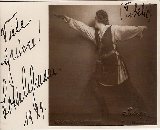 The only commercial recording she made, shortly after the Beethoven centenary celebrations, of ‘Komm’ Hoffnung’ from Act 1 seems to have caught her on an off day (some record labels, incidentally, state erroneously that she begins with the recitative, ‘Abscheulicher, wo eilst du hin?’). The livelier part towards the end of the aria finds her in technical difficulties, emphasized by extra and frequent audible breathing. [This is just his opinion]. Some time later, after she had sung the role under Tocanini at Salzburg in 1935, a complete commercial recording of Fidelio with the Vienna State opera was announced (there is a reference in The Gramophone Shop Encyclopedia of Recorded Music, 1936, at the bottom of page 39, first column), to be made by HMV/Victor but nothing has come to light about the project. It is known that a set of test pressings of a complete Fidelio went with the singer to Santa Barbara in 1939 but these may have been recorded from a broadcast. The private recording of Act 1 on UORC 218 was made via short-wave radio transmission and the sound quality is heart-breakingly poor.
The only commercial recording she made, shortly after the Beethoven centenary celebrations, of ‘Komm’ Hoffnung’ from Act 1 seems to have caught her on an off day (some record labels, incidentally, state erroneously that she begins with the recitative, ‘Abscheulicher, wo eilst du hin?’). The livelier part towards the end of the aria finds her in technical difficulties, emphasized by extra and frequent audible breathing. [This is just his opinion]. Some time later, after she had sung the role under Tocanini at Salzburg in 1935, a complete commercial recording of Fidelio with the Vienna State opera was announced (there is a reference in The Gramophone Shop Encyclopedia of Recorded Music, 1936, at the bottom of page 39, first column), to be made by HMV/Victor but nothing has come to light about the project. It is known that a set of test pressings of a complete Fidelio went with the singer to Santa Barbara in 1939 but these may have been recorded from a broadcast. The private recording of Act 1 on UORC 218 was made via short-wave radio transmission and the sound quality is heart-breakingly poor.
In Lotte’s recording from Mozart’s Le Nozze di Figaro her countess always sounds more convincing than her Susanna, due perhaps to that lack of coquetry which Puccini observed in her Manon in Act 2 of his Manon Lescaut.
Korngold’s Das Wunder der Heliane was never successful and in spite of all Lotte’s efforts did not find its way into the repertory in Vienna. The part of Heliane appealed strongly to her and a performance she gave in Hamburg in 1928 was so mangificent that one critic went so far as to declare that performances such as this were among the finest then to be seen on the German stage, and its like had not been experienced since the days of Edyth Walker. Certainly her performance of Heliane’s aria from Act 2, ‘Ich ging zu ihm’ makes one of her most exciting records.
Desdemona from Verdi’s Otello is another of her roles which is insufficiently documented on commercial recordings. Her ‘Willow Song’ in the acoustic version is far preferable to the electric recording of eight years later. In the latter she is far too impassioned for so gentle an aria. [One man’s opinion.] Such an interpretation may be appropriate in the long scenes in Act 3, but Act 4 requires the approach she brought to Angelica. Moreover, in 1920 she could still command a morendo on high A – or at least take the note piano, so far as one can judge from the primitive recording. On a record one cannot turn round and visually suggest a soft top note. It is precisely this feature, somewhat untypical of our diva, that makes her Angelica fragment so precious. She did not easily command the lighter voice of, say, a Hina Spani, who also sang Elsa in Lohengrin.
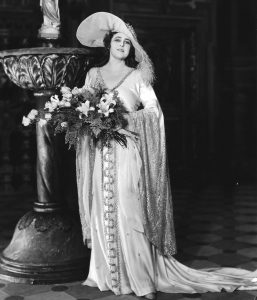 The prayer from Puccini’s Tosca is notable for the almost uncontrollable sobbing at the end. But as the singer herself remarked of Tosca the role was far too theatrical for her and she never really enjoyed performing it. Her later recordings from the opera are decidedly less distinguished than the earlier, though the Odeon company took considerable trouble over the remakes of ‘Vissi d’arte’ in 1929 – four recordings in all. The same amount of care was take over her recordings of Mimi’s aria from La Boheme, and with the two acoustic versions that precede it.
The prayer from Puccini’s Tosca is notable for the almost uncontrollable sobbing at the end. But as the singer herself remarked of Tosca the role was far too theatrical for her and she never really enjoyed performing it. Her later recordings from the opera are decidedly less distinguished than the earlier, though the Odeon company took considerable trouble over the remakes of ‘Vissi d’arte’ in 1929 – four recordings in all. The same amount of care was take over her recordings of Mimi’s aria from La Boheme, and with the two acoustic versions that precede it.
The Wagner session of February 1930 yielded some satisfying remakes of the best-known excerpts from Lohengrin and Tannhäuser, corner-stones of her Wagner repertoire, which she had first recorded as long ago as 1914 and 1916. The closing scene from Tristan und Isolde, the Liebestod is, however, only a glimpse of something extraordinary that might have been – if perhaps only once. She had studied the part of Isolde under Bruno Walter. [This is a figment of J.’s imagination.] The later live recoding under Pierre Monteux shows that she had not worked on the score recently, and this suggests that she did not often sing this Wagnerian fragment. [She often sang the fragment as can be seen in the Chronology. Her age was the reason for the poor Monteux broadcast.]
Massenet’s operas, Manon and Werther, were extremely popular in Vienna and the extracts and the earlier acoustic versions, though sung in German, are uniformly excellent. It might be objected that the weeping in Manon is overdone, especially as French singers rarely produce such an intense expression of grief, but it must not be forgotten that Massenet himself wrote ‘Tres troublé’ into the score.
The last sessions for Odeon are very fine. These include excerpts, far too short, from Strauss’s then new opera, Arabella. Comparison with Viorica Ursuleac, who sang the role at the world premiere (the first world premiere of an opera to be broadcast live) is perhaps unavoidable, but the difference is all too clear. It is said that Ursuleac ‘did not record well’, as if the recording machine could not cope with the vibrations in her voice. It is more likely, however, that she was one of those singers who cut a believable figure on the operatic stage but whose voice does not really stand up to the merciless scrutiny of the microphone. There have been, and still are, many such singers.
Details about the HMV recording of scenes from Der Rosenkavalier have been give in the texts of this book. [Jeffersons’ bio] Outstanding as the performance is, the recording is far from perfect technically, and though Heger conducts competently it can only be regretted that neither Strauss himself nor Bruno Walter was in charge of the orchestra. The fragment from Act 1 is more clearly recorded by Odeon and the singing is not affected by the bad patch that Lotte was experiencing in December 1927. What is more, the side contains music not recorded in the HMV set.
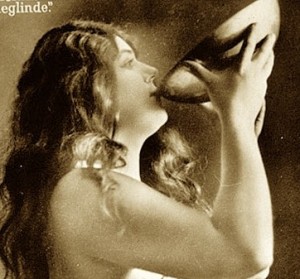 The other operatic venture undertaken by HMV in the mid-1930s, the complete recordings of Acts 1 and 2 of Wagner’s Die Walküre, is so good that it can justifiably be called one of the glories of the gramophone. Act 1 still deserves to benefit from a remastering and fresh dubbing on to microgroove to do it full justice, the treatment accorded to the Der Rosenkavalier excerpts for reissue on the World Record Club label in 1972, [Of course CD reissues have been superior and Pristine has improved the sound.] It is extraordinary how little one actually notices the transition from the Vienna Philharmonic Orchestra under Bruno Walter to the Berlin Philharmonic Orchestra under Bruno Seidler-Winkler, recorded three years later in Berlin. Musically, the listener could have noticed how much more fire Bruno Walter brought to the introduction to Act 2. In Nazi Germany this act was sold incomplete, with all the parts sung by Lotte Lehmann and conducted by Bruno Walter removed. [!]
The other operatic venture undertaken by HMV in the mid-1930s, the complete recordings of Acts 1 and 2 of Wagner’s Die Walküre, is so good that it can justifiably be called one of the glories of the gramophone. Act 1 still deserves to benefit from a remastering and fresh dubbing on to microgroove to do it full justice, the treatment accorded to the Der Rosenkavalier excerpts for reissue on the World Record Club label in 1972, [Of course CD reissues have been superior and Pristine has improved the sound.] It is extraordinary how little one actually notices the transition from the Vienna Philharmonic Orchestra under Bruno Walter to the Berlin Philharmonic Orchestra under Bruno Seidler-Winkler, recorded three years later in Berlin. Musically, the listener could have noticed how much more fire Bruno Walter brought to the introduction to Act 2. In Nazi Germany this act was sold incomplete, with all the parts sung by Lotte Lehmann and conducted by Bruno Walter removed. [!]
These two Wagner acts are a true memorial to the greatness of Lotte Lehmann, who described Sieglinde as the role she most treasured, the one, so she thought, that best matched her own temperament and dispositions…
In the autumn of 1935 Lotte Lehmann entered on the last part of her recording career. All the records were made in America, and all were recordings of songs. They were issued for the most part, in albums, in sets of three or more 78 rpm pressings…
The first two albums from 1935 and 1937 find the singer still in good voice. They contain her finest recordings in the field of German Lieder and include some rare titles by composers such as Pfitzner, Marx and Franz. Except for ‘Die Krähe’, her abridged recording of Schubert’s song cycle, Winterreise, made in 1940, is less satisfactory. Age is beginning to take its toll on the voice and a certain uniformity of approach in her interpretations is becoming apparent. [Again, one man’s opinion.] When she completed the recording of this cycle for American Columbia a year later, her mannerisms had become even more noticeable, and there is often a want of softer coloring, of mezza voce, the lack of which the close recording does not help to disguise.
One song in particular by Schubert, ‘Der Doppelgänger’ which she made at this time, should never have been issued. The sound she produces is not pleasant and the song really needs a much larger voice. For once she had overstepped her limitations. Hans Hotter, and after him Dietrich Fischer-Dieskau, have both recorded striking performances. Lotte’s rival in singing Lieder written for the male voice, Elena Gerhardt, probably never attempted the song. [This recording of Lehmann has often been sited for lapse of judgment. You can listen and judge for yourself.]
Her recordings of Lieder by Brahms are so much better that it can only be concluded that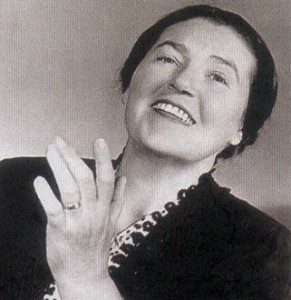 she had a better rapport with this composer than with Schubert. One of her finest interpretations…is ‘Auf dem Kirchhofe’. The scene is painted in so remarkable a way as to leave her greatest rivals, Elena Gerhardt and Dietrich Fischer-Dieskau, far behind. One is in the graveyard with the chilly gust of wind and rain, which are underlined by the accompaniment though in the score all one sees is a string of rising arpeggios. In More than Singing, she wrote: ‘The prelude gives the impression of a storm with it torrents of rain. Take up the storming with your whole being’. This is what she does on the record. Another set of songs to which she was well suited is Brahms’ Zigeunerlieder.
she had a better rapport with this composer than with Schubert. One of her finest interpretations…is ‘Auf dem Kirchhofe’. The scene is painted in so remarkable a way as to leave her greatest rivals, Elena Gerhardt and Dietrich Fischer-Dieskau, far behind. One is in the graveyard with the chilly gust of wind and rain, which are underlined by the accompaniment though in the score all one sees is a string of rising arpeggios. In More than Singing, she wrote: ‘The prelude gives the impression of a storm with it torrents of rain. Take up the storming with your whole being’. This is what she does on the record. Another set of songs to which she was well suited is Brahms’ Zigeunerlieder.
The custom of female singers performing songs, and in particular song cycles, (such as Schubert’s Winterreise and Die schöne Müllerin, and Schumann’s Dichterliebe), the poems for which are intended to be sung by a man, has come in for some criticism, even though Elena Gerhardt sang the Winterreise cycle and songs like ‘Der Atlas’ and ‘Der Zwerg’. In the introduction to her last book, Eighteen Song Cycles, Lotte Lehmann repudiates such criticism: ‘Why should a singer be denied a vast number of wonderful songs, if she has the power to create an illusion, which she makes her audience believe in?’ And this she most certainly did – perhaps most successfully in Dichterliebe, aided not least by the inspired playing of Bruno Walter. When this set was made only one serious rival had a complete recording in the catalogue: Gerhard Hüsch.
Lotte always begged her friend, Elisabeth Schumann, an unrivalled exponent of Mozart, not to come to her recitals before the interval, that is, after she had sung her Mozart group. And on record, at least, she does not display a true feeling for the classical pulse of the songs. In ‘Abendempfindung’ her rhythmic treatment is so free that the flowing accompaniment loses its impetus as the pianist strives to maintain the ensemble. Mozart singing requires greater rhythmic energy and a more instrumental approach than she gives it.
Towards the end of her career Lotte began to include some French melodies in her repertoire, songs by Duparc and especially by Reynaldo Hahn. It cannot be said that she sounds convincing in this music as her pronunciation of the French language leaves much to be desired. In fact, it is practically unintelligible, something most unusual for her. [First, Lehmann had introduced French songs early in her career, and second, many people enjoy and savor every syllable of her French.]…
[Re: live recordings]…[I]t is interesting to compare certain songs with performances of the same music recorded in the studio, for example, Mendelssohn’s ‘Venetianisches Gondellied’ and Schubert’s ‘Die Männer sind méchant’. In the live performance she tends to use more emphasis to intensify the meaning of the text, and this also make her sound warmer. The way her audiences react is also revealing. The 1938 Wolf recital, though the sound is no more than adequate, [the Music & Arts CDs have improved this tremendously.] clearly shows how Lotte played on, and with, her audience. She inserts encores after a group of songs, and even repeats two songs during the course of the recital. Finally, for her penultimate encore, she announces Leo Blech’s ‘Heimkehr vom Feste’ in which she is infectiously merry as the character in the song who is returning home from a party, have had too much to drink….
Outstanding among her public performances is the live recording of Schumann’s song cycle, Frauenliebe und –leben with Paul Ulanowsky, which is vastly superior to the studio version she made with Bruno Walter. The original masters from which the microgroove record was made were partly damaged, [this has been corrected on the Music & Arts CD], but the listener should not let that deter him from the extraordinary experience of hearing a performance of this well-known work such as one enjoys perhaps only once in a lifetime.
A frequent mannerism in these late recitals, and not noticeable on her acoustic recordings, is a quite audible intake of breath. It was becoming conspicuous in the recordings sessions of December 1927 and, by about 1940, had turned into shortness of breath. A Viennese throat specialist is said to have diagnosed nodules on Lotte’s vocal cords but she did not have an operation as she thought they enhanced the particular quality of her voice. She mentions this in 1945 in her book More than Singing (p. 17): ‘With justice I am reproached for breathing too often and so breaking the phrases. This is one of my unconquerable nervous inadequacies’. In fact, it is often difficult to tell if her frequent breathing is being used as a means of enhancing expression, or a matter of sheer necessity.
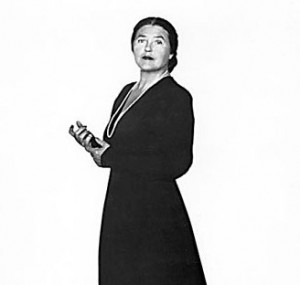 A special feature displayed by Lotte Lehman on most of her records, certainly up to the end of the 1930s, is that of morbidezza, an Italian word used to describe, in singing, a particular vibrant quality of tone, which serves to transmit emotion and attract immediate attention. Horst Wahl, who often heard the artist in the Odeon recording studios, refers to this in a letter to the writer in 1988: ‘The impression she made on us all with her heavenly voice is indescribably. Even now, after so many years, I can still feel, almost with pain, the wonderful beauty and warmth of her voice. To be standing near her when she was producing that steady stream of golden tone was an experience barely to be endured, and her great personal warmth always ensure that her singing went straight to the heart’.
A special feature displayed by Lotte Lehman on most of her records, certainly up to the end of the 1930s, is that of morbidezza, an Italian word used to describe, in singing, a particular vibrant quality of tone, which serves to transmit emotion and attract immediate attention. Horst Wahl, who often heard the artist in the Odeon recording studios, refers to this in a letter to the writer in 1988: ‘The impression she made on us all with her heavenly voice is indescribably. Even now, after so many years, I can still feel, almost with pain, the wonderful beauty and warmth of her voice. To be standing near her when she was producing that steady stream of golden tone was an experience barely to be endured, and her great personal warmth always ensure that her singing went straight to the heart’.
